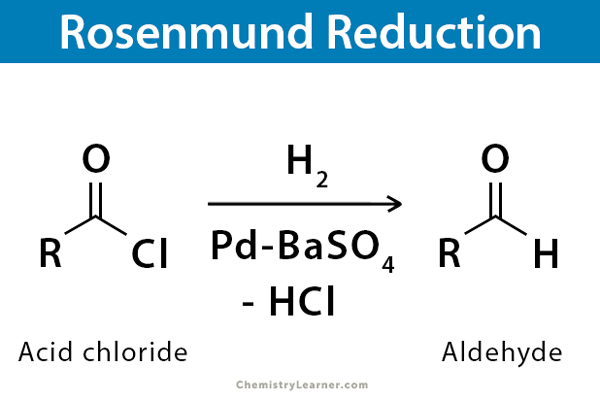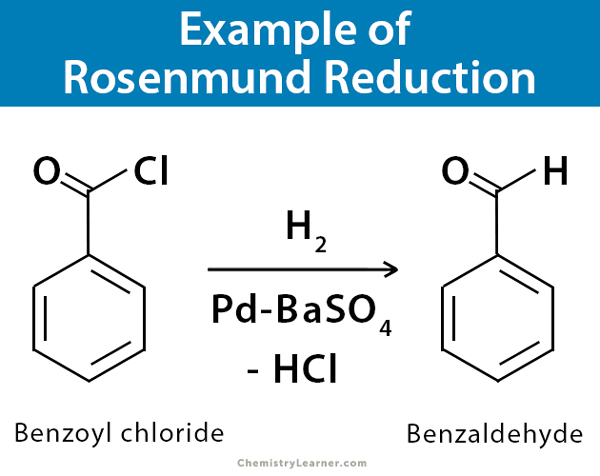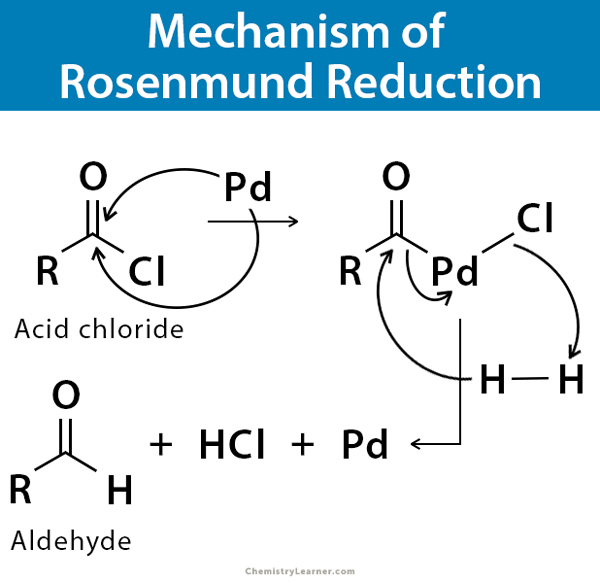Rosenmund Reduction
Definition: What is Rosenmund Reduction?
Rosenmund Reduction is an organic chemical reaction in which an acid chloride is converted to an aldehyde by using hydrogen gas passed over palladium (Pd) on barium sulfate (BaSO4). Barium sulfate reduces the activity of palladium due to its low surface area. As a result, it decreases the reducing power of palladium in order to prevent the over-reduction of the acid. The catalyst is known as the Rosenmund catalyst. However, for certain reactive acyl chlorides, the catalyst is mixed with a poison like thioquinanthrene and thiourea in order to prevent further hydrogenation. If the catalyst is not deactivated, further reduction will take place, resulting in primary alcohol. The alcohol will then react with the remaining acid chloride to form an ester [1-5].
The catalyst is prepared by the reduction of palladium (II) chloride solution in the presence of barium sulfate. Formaldehyde cannot be prepared through this process, as formyl chloride is unstable at room temperatures. An application of Rosenmund reduction is in the formation of saturated fatty aldehyde.
This reaction is named after a German chemist Karl Wilhelm Rosenmund, who first reported it in a journal in 1918.
Example of Rosenmund Reduction
An example is benzoyl chloride (an acid chloride) reacts with hydrogen and Pd/BaSO4 (a poisoned catalyst) to produce benzaldehyde [4].
Mechanism of Rosenmund Reduction
Hydrogen gas is passed through acid chloride in the presence of Pd/BaSO4 resulting in an aldehyde and hydrochloric acid. The palladium catalyst is regenerated.
References
- Review – Onlinelibrary.wiley.com
- Review – Nature.com
- Review – Onlinelibrary.wiley.com
- Example – Chem.ucla.edu
- Applications – Jlr.org







